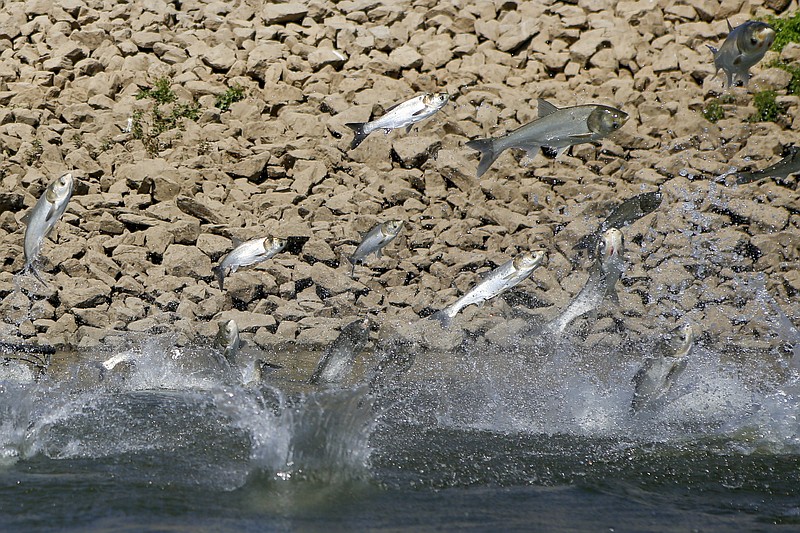The Tennessee Wildlife Resources Agency has received a report of invasive Asian carp spotted in Chickamauga Lake.
An angler told the agency a silver carp jumped into his boat as he used a trolling motor, according to a news release from the agency. The man said he saw another 15-20 fish near the surface.
Silver carp are one of several species of invasive Asian carp that are a concern for wildlife officials. The fish in Chickamauga Lake were spotted in October, but the report was made Friday, according to the agency. The TWRA has received no additional reports of silver carp on the lake but is asking the public to keep an eye out.
"This is an excellent reminder to report carp sightings from East Tennessee, where carp are not already known to be established," said TWRA Aquatic Nuisance Species Coordinator Cole Harty. "We encourage anyone reporting to include photos, location information, and if possible keep a fish frozen to share with TWRA."
Wildlife officials think the invasive carp likely traveled up the Tennessee River through navigation locks to Chickamauga Lake.
"TWRA has been working with multiple partners to limit the spread and impact of invasive Asian carp in Tennessee," said the agency's Fisheries Chief Frank Fiss. "This new observation demonstrates the urgency of the issue."
The invasive species, whose growing population has migrated from the Ohio River into the Tennessee River, threatens the region's renowned biodiversity, commercial fishing industry and poses a health risk to recreational boaters.
So far, they've wreaked havoc in Illinois, Missouri and Kentucky. Millions of pounds of the fish swim in Midwestern states. There's a large federal effort to keep the fish out of the Great Lakes. Now, most of the fish have been kept to the north, with large populations in Lake Barkley and Kentucky Lake along the Tennessee-Kentucky border.
The hope had been that a prototype sound barrier, construction of which was completed in November at Lake Barkley Lock and Dam in Southern Kentucky, would be able to keep the fish from spreading through the Tennessee River system and its renowned freshwater ecosystem. It's not clear if the fish found in Chickamauga Lake arrived before the sound barrier was completed.
State officials had said that if the barrier appeared to work, they would seek federal funds to build new sound barriers across the state. The barriers cost millions of dollars each.
"The only other option is an electric barrier," Fiss told the Times Free Press in July. "There's interest in that from people in the Chattanooga area, but they're very expensive and they're dangerous. You can get electrocuted; it'd be a real risk to have publicly navigable locks with electricity."
Staff writer Mark Pace and the Associated Press contributed to this story.

